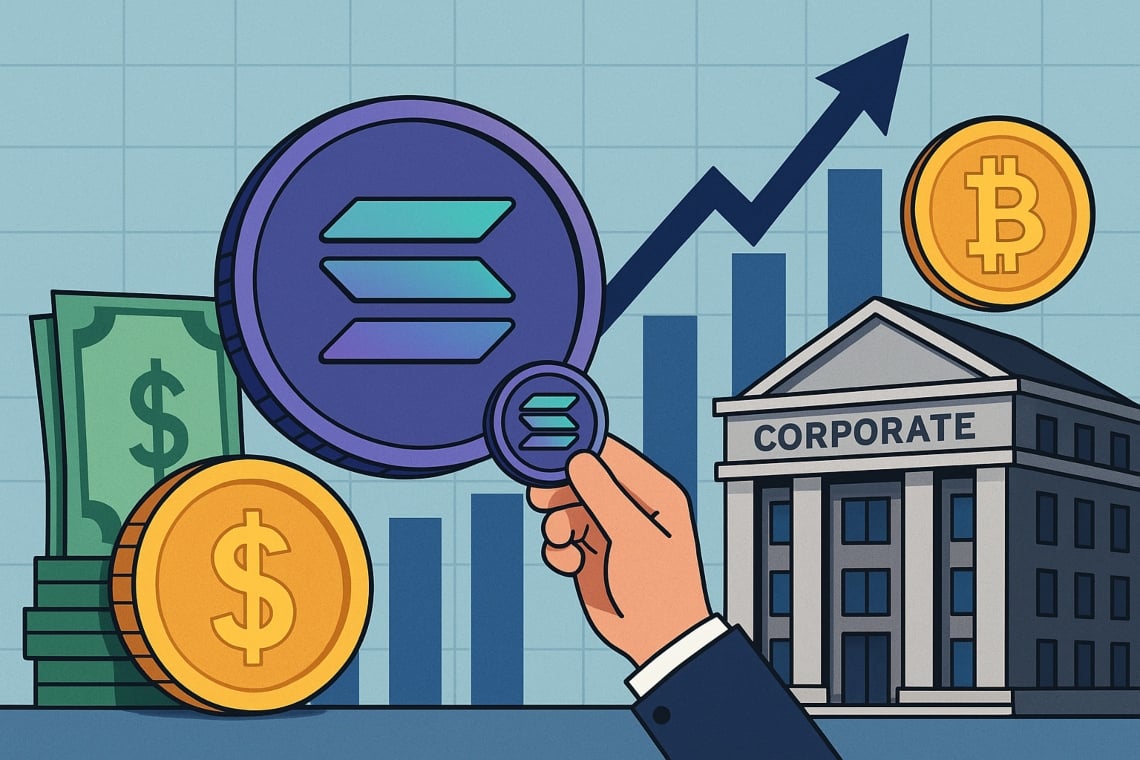Sharps solana buyback has emerged as a focal corporate move that could reshape how projects manage a Solana treasury and influence market sentiment. This article explains the mechanics, market impact and what investors should watch next.
What exactly is the Sharps Solana buyback and why does it matter?
The term refers to a reported initiative by Sharps to repurchase SOL from the market as part of a broader stock repurchase program-style approach for crypto treasuries. In practice, such a program aims to reduce circulating supply and demonstrate confidence in protocol economics.
In this context, markets tend to interpret buybacks as a corporate vote of confidence; that said, the precise structure — timing, size and execution mechanics — has not been fully disclosed by the company, so readers should remain cautious.
How does a corporate solana treasury approach differ from a public project’s reserve policy?
A corporate solana treasury typically focuses on balance-sheet goals, such as stabilizing treasury value or reallocating capital. By contrast, public protocol treasuries often prioritize community grants, development funding, or ecosystem incentives.
It should be noted that a deliberate buyback — sometimes called a sharps technology buyback in press shorthand — blends corporate finance tools with crypto-native strategies like token burns or on-chain buybacks, producing hybrid outcomes that require tailored governance and reporting.
What on-chain signals would confirm a buyback is happening?
On-chain confirmation would include concentrated buy orders from treasury-controlled addresses, declines in disclosed solana treasury holdings, and recurring transactions to exchange liquidity pools.
Yet, unless Sharps publishes wallet addresses, on-chain evidence may be partial and require careful attribution. Analysts therefore combine chain data with corporate disclosures to form a credible picture.
- Change in treasury wallet balances: disclosed by company
- Repeated purchases on DEXs or CEXs: disclosed by company or visible on-chain
- Announcements tied to a formal stock repurchase program: company disclosure
How might the buyback affect the Solana price outlook?
Buybacks can be supportive to price by reducing immediate sell pressure and by signaling management confidence. In the short term, they may tighten liquidity and produce price spikes.
However, markets are forward-looking; the longer-term solana price outlook will hinge on adoption, staking flows and macroeconomic conditions rather than a single corporate action.
Could this accelerate institutional solana adoption?
Potentially yes. A high-profile corporate solana treasury engaging in buybacks may normalize treasury management strategies for other firms and lower perceived operational risk.
That said, institutional investors weigh custody solutions, compliance frameworks and liquidity considerations — so buybacks remain one element among many in the adoption calculus.
What are the risks and unintended consequences?
First, buybacks funded by liquidating other assets could shift systemic risk rather than reduce it. Second, poor timing may amplify volatility. Third, opaque execution can invite regulatory scrutiny.
It should also be noted that in DeFi contexts, a concentrated buyback can distort market-making incentives: Automated Market Makers (AMMs) and liquidity providers may face short-term losses if price reversion occurs once the program concludes.
How have other projects handled treasury repurchases historically?
Historically, crypto entities have used repurchases to shore up tokenomics or return value to stakeholders. Some projects executed transparent buybacks with on-chain proof; others faced criticism for insufficient disclosure. Therefore, transparency is central — stakeholders increasingly expect clear governance, publishable metrics and third-party attestations to validate claims.
What should traders and builders watch for next?
Watch for official Sharps disclosures and for concrete on-chain movements. Also monitor changes in staking ratios, liquidity on major AMMs, and order book depth on leading exchanges.
In practice, triangulating corporate statements with explorer data and market liquidity metrics produces the most reliable read.
Who should provide the authoritative verification?
The clearest verification comes from primary sources: the company’s treasury disclosures, auditor attestations, and verifiable wallet addresses. In addition, reputable market analysts or chain-data firms can provide corroboration.
To that end, the PIPE backers were disclosed by the company to include names such as Pantera and others. Sharps also disclosed a $400 million PIPE in August 2025 and that it holds 2 million SOL. For regulatory context, see the SEC.
How does this fit into broader DeFi development buyback trends?
Across DeFi and Web3, buybacks reflect an evolution towards mature treasury management. Projects now adopt mechanisms akin to corporate finance, blending them with tokenomics.
This trend — sometimes termed defi development buyback — aims to balance funding needs and market stability. Yet the ultimate success of such programs depends on governance quality, transparency and prevailing market conditions.
Where can readers verify claims and follow developments?
Check the issuer’s official channels and on-chain explorers for wallets and transactions. Also consult independent research platforms and reputable crypto news outlets.
Useful starting points include: Solana updates and market data providers. Remember to treat unverified posts with caution.
Final takeaways for investors and builders
In sum, a sharps solana buyback disclosed by the company could be significant for token supply dynamics and for signaling corporate commitment to Solana.
Yet, its real impact depends on execution, disclosure, and macro liquidity conditions. Consequently, investors should seek verified data, consider on-chain indicators, and weigh how this program interacts with broader trends like institutional solana adoption and ecosystem funding models.
In my experience advising token treasuries, practical execution matters more than headlines: stagger buys using TWAP/VWAP, limit daily volume to a small percentage of average daily volume (commonly ≤5% ADV), and publish attested wallet addresses to aid attribution.
Firms that combine clear disclosure with third-party attestations reduce speculation and regulatory friction. For official guidance on disclosure expectations and reporting, consult the SEC and follow ongoing coverage on Cryptonomist.
